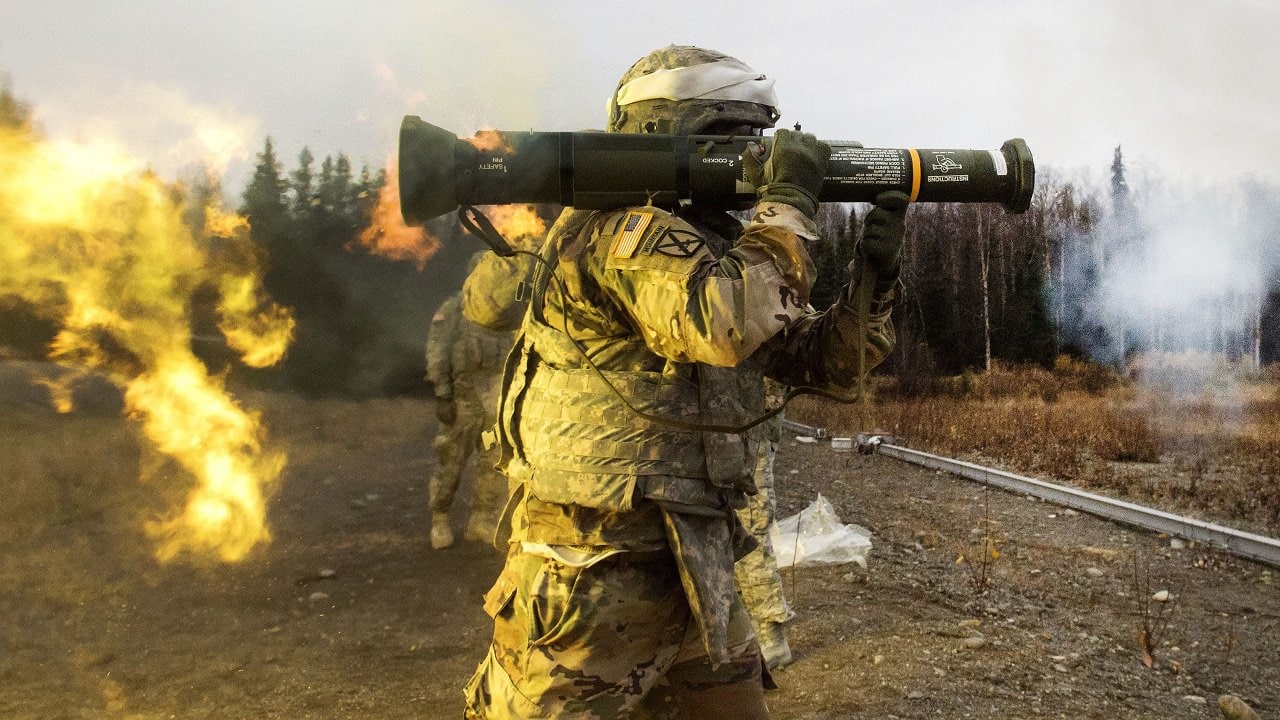AT4, Explained – To say the least, Western-made anti-tank weapons have been a major source of misery for Vladimir Putin and his military planners during their so-called “special military operation” in Ukraine. For starters, there’s the FM-148 Javelin, which the Ukrainians have been using to destroy Russian tanks left and right. Then there’s the 84mm Carl Gustaf m/48 Granatgevär (“grenade rifle”) recoilless rifle, which Ukraine’s Kharkiv Territorial Defense Forces used to destroy a T-90M main battle tank, arguably the most sophisticated MBT that the Russians have deployed in the invasion, thus also scoring major propaganda points from Ukraine’s Ministry of Defence on their Twitter page. Rounding out this Unholy Trinity of Death in the Ukrainian arsenal is the 84mm AT4.
Making Misery for the Russians on Multiple Fronts
Back on 16 March 2022, the White House announced that it would provide 6,000 AT4s to Ukraine, which is bolstered even further by the 10,000 AT4s supplied directly from the weapon’s country of manufacture, Sweden. My 1945 colleague Brent Eastwood describes the advantages to the AT4 thusly:
The AT4 is one of the most basic anti-tank weapons that new U.S. Army recruits usually learn to operate early in their career. Troops can be easily trained due to their straight-forward design. These weapons will be helpful to Ukrainian reserve territorial defense units. Volunteers with no prior military experience can be force-multipliers with these weapons as many reservists are only armed with AK-47s.
The downsides of the AT4 are the fact that (1) it’s a one-and-done weapon that’s discarded after use, unlike the Carl Gustaf that can be used for multiple firings, and (2) it’s not particularly effective against main battle tanks (MBTs). However, it’s still quite useful against lighter tanks, armored personnel carriers (APCs), plus enemy bunkers and defensive emplacements.
What’s more, the Ukrainians—embodying the military mantra of “Adapt, Improvise, Overcome”—have even successfully employed the AT4 against naval targets! More specifically, on 22 March 2022, the defenders of the beleaguered city of Mariupol used an AT4 to damage a Russian Raptor patrol boat—a feat that becomes all the more impressive when you consider that these Raptors (obviously not to be confused with the F-22 Raptor) are significantly faster than any currently-fielded MBT, boasting a top-end speed of 48 knots (55 mph). Yes, the Russian T-14 Armata MBT is supposed to have a speed capability of 56 mph (90 kph), but that particular model has not made it past the trial phase yet.
Part of the Swedish Smorgasbord of Strikers
The AT4 is manufactured by Saab Bofors Dynamics, the same Swedish armaments company that makes the Carl Gustaf m/84. If the Bofors portion of the company name sounds familiar to the military history buff, there’s a good reason for it: the 40mm Bofors was the premier antiaircraft gun of all time, used in far-flung battlefields from ground-based crews during the Battle of Britain in 1940 to anti-kamikaze duty aboard U.S. Navy vessels in 1945. Meanwhile, prior to its purchase of Bofors, Saab produced famous fighter planes such as the Saab 35 Draken and Saab 37 Viggen. In short, this is an arms manufacturer that certainly knows its stuff.
The list of nations that employ the AT4 reads like a veritable smorgasbord (if you will); 21 countries at most recent count, from Argentina to Venezuela. Officially entering service in 1987, the weapon was used in the US invasion of Panama, the War in Afghanistan, the Persian Gulf War, and the Iraq War.
The AT4 is a little over 3 feet (roughly 1 meter) in length and weighs around 15 pounds (6.80 kilograms). The round has a muzzle velocity of 820 feet (250 meters) per second and can penetrate 16 inches (40.64 centimeters) of armor at a maximum effective range of roughly 1,000 feet (305 meters). The projectiles can be high-explosive anti-tank, dual-purpose delayed penetration, high-penetration, and anti-structure for urban combat.
All of which does not bode well for the Russian troops involved in the Ukraine conflict. As if they didn’t have enough headaches already.
Christian D. Orr is a former Air Force officer, Federal law enforcement officer, and private military contractor (with assignments worked in Iraq, the United Arab Emirates, Kosovo, Japan, Germany, and the Pentagon). Chris holds a B.A. in International Relations from the University of Southern California (USC) and an M.A. in Intelligence Studies (concentration in Terrorism Studies) from American Military University (AMU). He has also been published in The Daily Torch and The Journal of Intelligence and Cyber Security.

